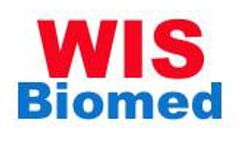Refine by
Parenteral Articles & Analysis
9 articles found
The first is that it usually requires parenteral administration (e.g. intravenous injection). The second is that such treatment is frequently associated with significant systemic side effects that limit their tolerability to patients. ...
For patients and parents recently affected by or managing short bowel syndrome, TPN is likely new to their vocabulary. While any clinical acronym may sound overwhelming, TPN is not such a complicated one to understand. ...
What do rat poison and anticoagulation medicine have in common? As often happens in scientific discovery, research follows a twisted route to the most effective remedy. ...
As a parent, you want and hope the best for your children. When your child is diagnosed with a severe condition such as Short Bowel Syndrome, you can feel as if your world has turned upside down. Managing their disease and helping your child lead a better life becomes your top priority. For any parent, the first step in supporting your child is to better understand their disease and the ...
Created for parents, by parents. No parent expects the news. So when you receive the news of a Short Bowel Syndrome diagnosis, it’s only fair that it’s a little overwhelming. Your picture of what the future of your family looks like begins to shift, and you have to shift with it. Let’s start off by saying, you’re not alone. There are parents, caregivers and family ...
Laboratories must measure impurities based on a J value for each drug product; drug products may be oral, parenteral (ex. intravenous, injection), or inhalation types. The J value of the drug is calculated based on an established permissible daily exposure (PDE), maximum daily dose of the drug (MDD), and the dilution factor used in the sample preparation method. ...
Here, we tested a prophylactic live-attenuated vaccine against herpes simplex virus type 1 (HSV-1), a widespread human pathogen that can cause corneal blindness. Parenteral vaccination of mice resulted in sterile immunity to subsequent HSV-1 challenge in the cornea and suppressed productive infection of the nervous system. ...
This review outlines and explores nanocarrier systems for drug delivery by various administration routes including parenteral, oral, transdermal, pulmonary, ocular, and mucosal and discusses the product development and related issues in nanopharmaceutical drug delivery.Keywords: liposomes, polymeric nanoparticles, polymeric micelles, lipid nanoparticles, microemulsions, nanogels, ...
MFI™ for Parenteral Drugs USP Chapter 788 (Particulate Matter in Injections) describes physical tests to be performed for the purpose of enumerating subvisible particles within specific size ranges. ...







